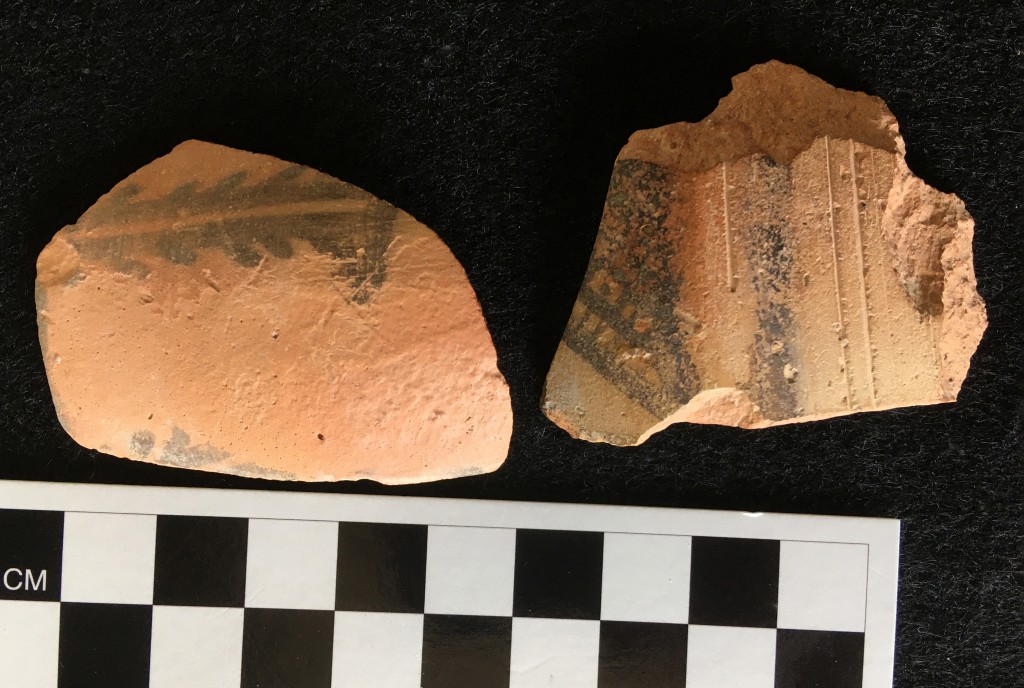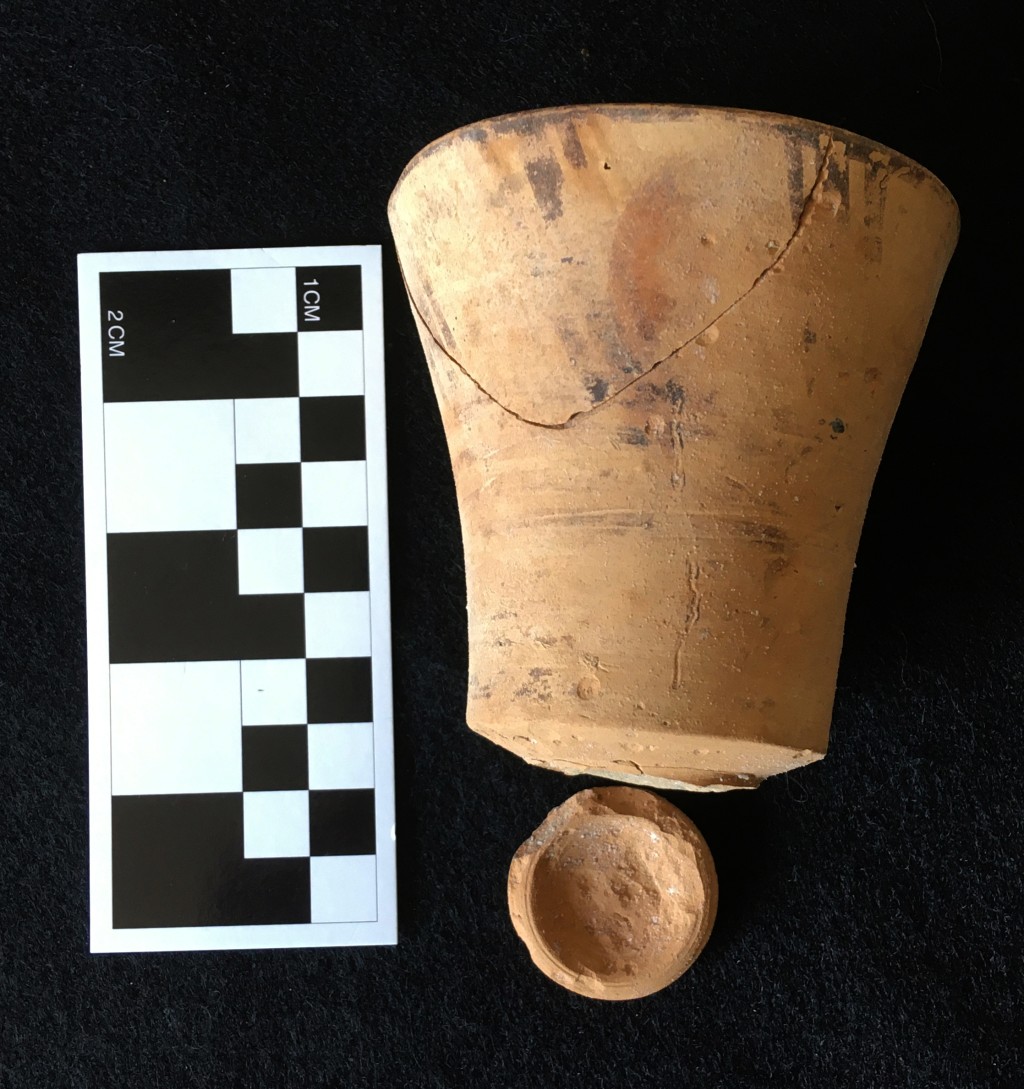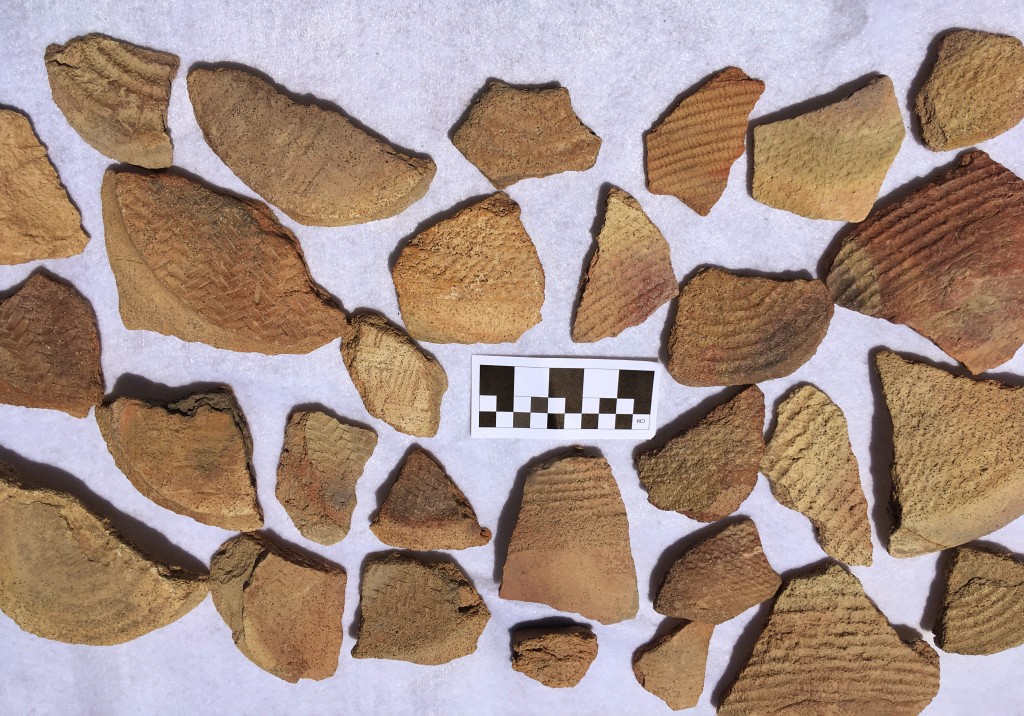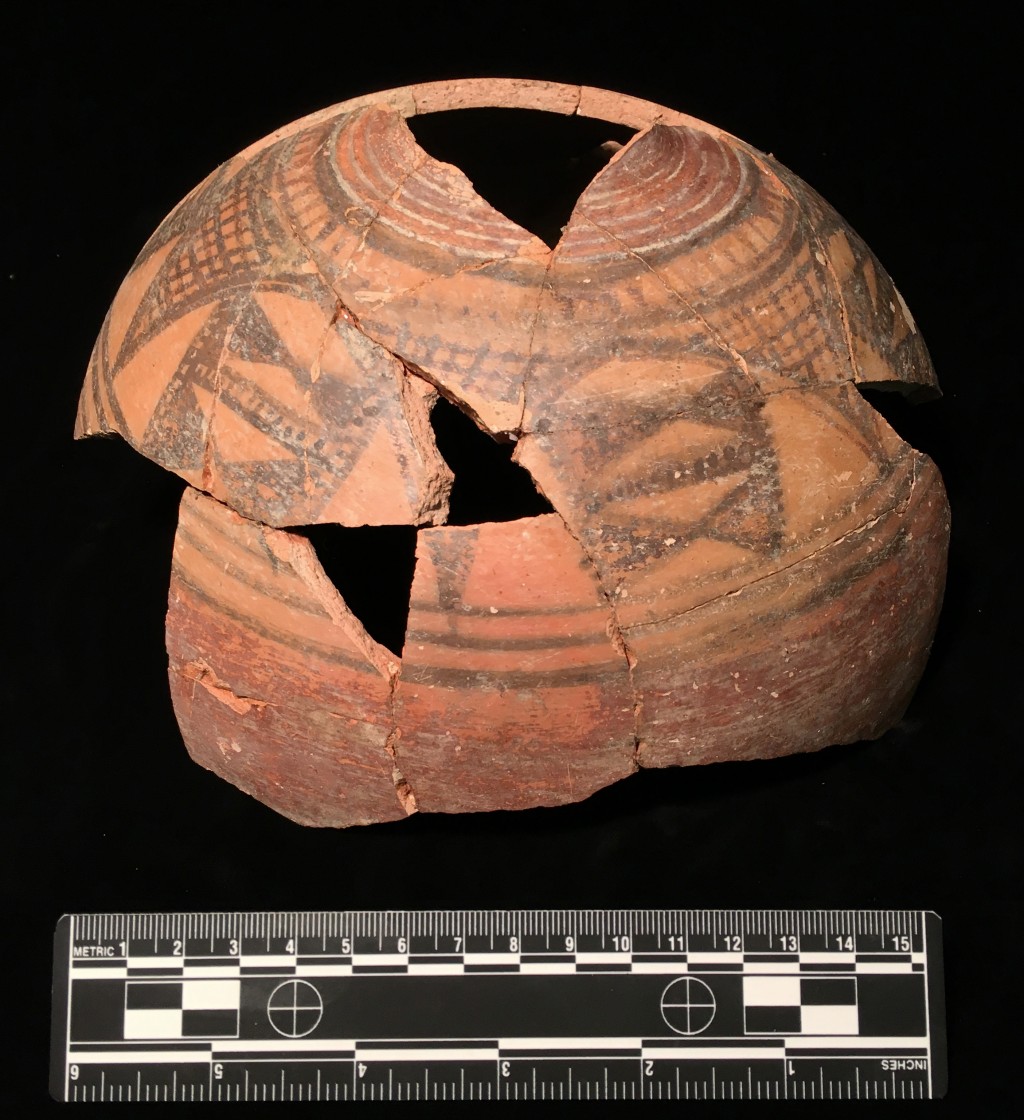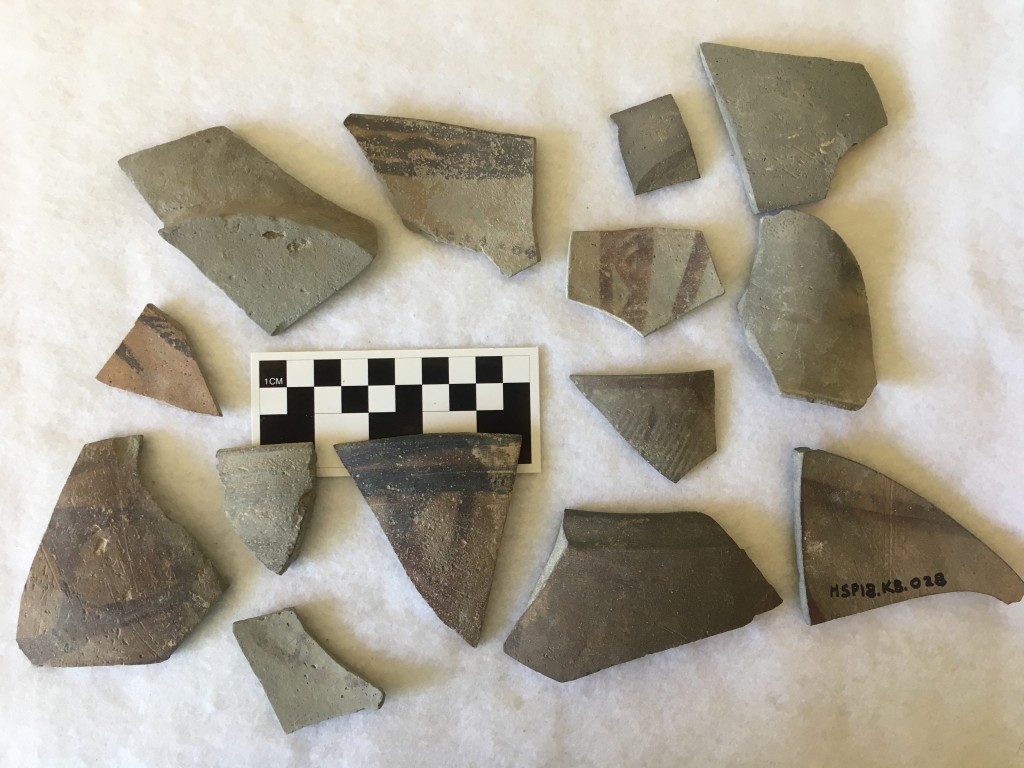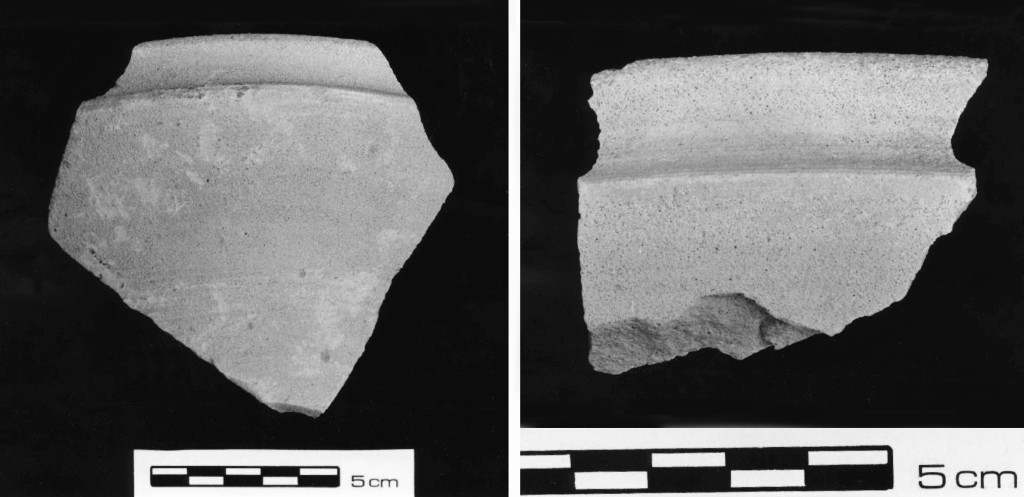Bronze Age
A 50-year-long excavation project in Iranian Sistan has made identifying our Bronze Age ceramics much simpler. Shahr-i Sokhta, “The Burnt City,” is an UNESCO World Heritage site dating to the 3rd millennium BCE and has been studied since the 1960s. The painted pottery from Shahr-i Sokhta has been extensively published and compared with other sites both inside and outside of Sistan. Our ceramic finds at two sites—Dam and Godar-i Shah—provide few surprises to this large corpus. Two styles of painted wares, one on a light colored clay, the other on gray clay, are found at Dam. We also found numerous mat impressed potteries, some impressed on the base, some on the sides, some seemingly created within a basket. All are known from previous research in Sistan, southeast Iran, and northwest Pakistan. A form of pottery with a carinated shoulder may come from a slightly later period, early in the 2nd millennium BCE. The most intriguing piece we found, a highly polished and decorated, almost complete, globular vessel, comes from Lat Qala and has similarities in Harappan and post-Harappan Baluchistan to the southeast of Sistan.
What surprised us the most was that, despite the frequency of Bronze Age pottery found on sites in Iranian Sistan, we found very little of it along the Helmand River itself, which we have assumed to have been continuously occupied in the 3rd and 2nd millennium BCE. We have no clear explanation for this, though we suspect it is related to the difficulty of finding artifacts in a river valley subject to annual flooding and in which the land has been in continuous use since the Bronze Age.
